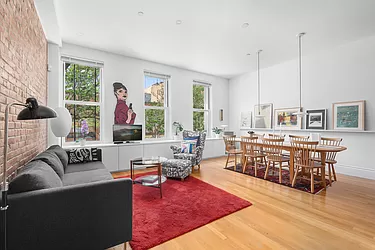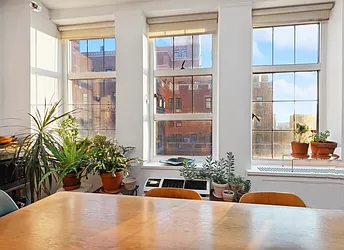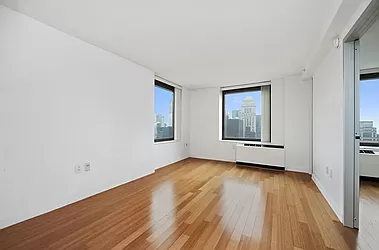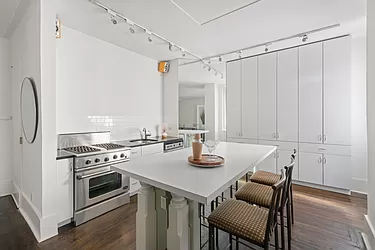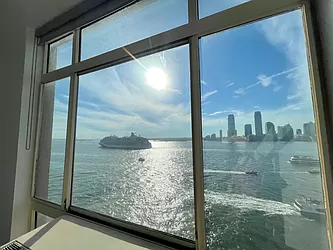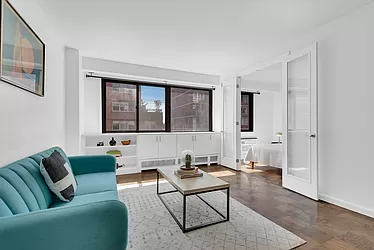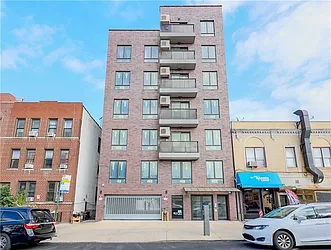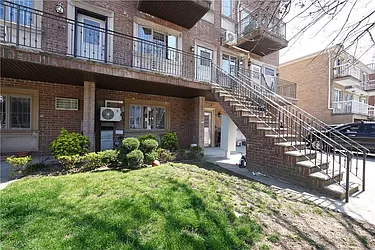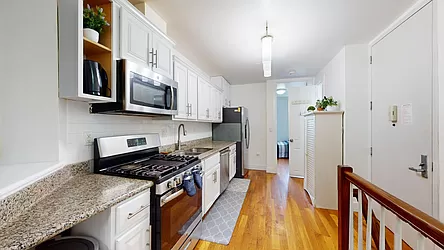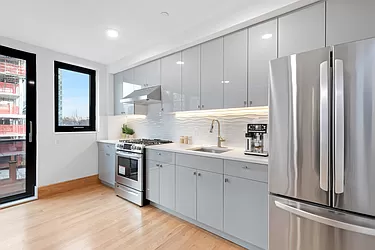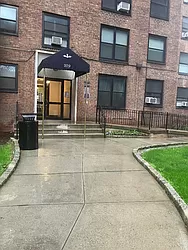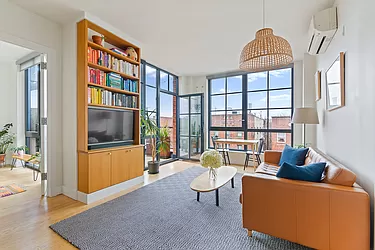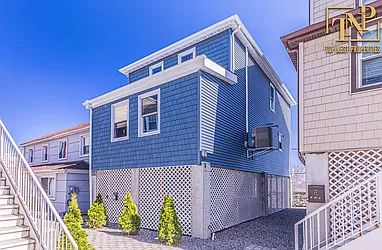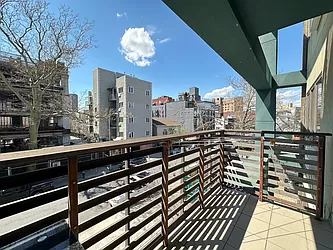How to Afford NYC
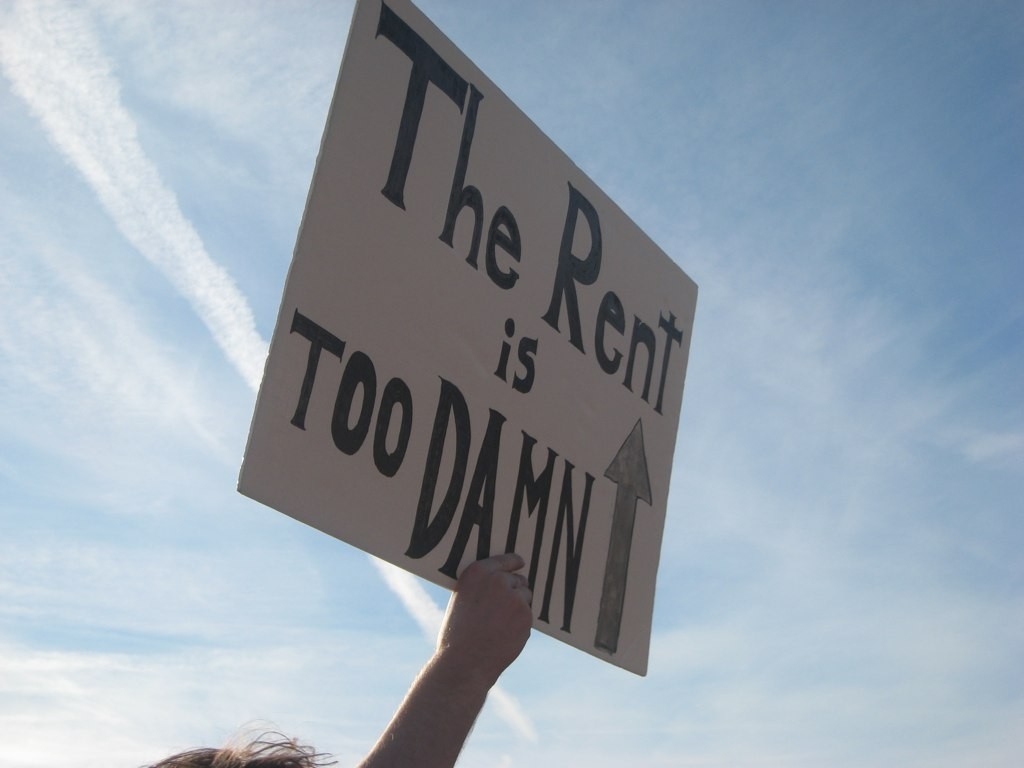
(Source: Grace C via Flickr Creative Commons)
[This post has been updated and republished.]
Home of the $15 hamburger and the $200-per-month gym membership, New York City has a deserved reputation for being one of the most expensive cities in the world. Roommates pack into tiny apartments to save money, and young professionals adopt spaghetti diets to survive weekends on $25 until their next paycheck drops. But just how expensive is the cost of living in this town? Naturally, certain factors play an outsize role in New York City’s high cost of living — namely, housing. But there are other costs that many New Yorkers don’t pay. Got a car? Didn’t think so, because owning a car in New York City is a major inconvenience, both unnecessary and expensive. Where else do New Yorkers save on costs, and where do they overspend? Let’s take a look at the cost of living in NYC.
Cost of Renting in New York City
In the immortal words of Jimmy McMillan, the rent is too damn high. Renting in New York City is insanely expensive, and recent data indicates little relief ahead. In 2017, the median annual asking rent in Manhattan clocked in at $3,150; in Brooklyn, it was $2,500. Over in Queens, renters can find some relief, but not much: The 2017 median annual asking rent was $2,175 per month. Although the cost of rent depends greatly on where you live, New Yorkers across the board bear a heavy burden in rent.
The U.S. Census defines “affordable” as a household with a rent-to-income ratio of 30 percent or lower. That means a renter should be spending no more than 30 percent of their income on rent, leaving the remaining 70 percent for food, clothing, transportation, childcare, maybe even a concert ticket or a cocktail. It’s expected that you’ll have a higher rent-to-income ratio living in a big city than you would in a small town in the middle of nowhere, but New York City is in a league of its own.
According to a StreetEasy study from last year, “On average, asking rents in New York City increased by 33 percent from December 2009 through June 2017, an annual pace of 3.9 percent per year.” The pace of rent growth far has outstripped the increase in prices for other goods, which “broadly forces renters in New York City to pay a greater share of their disposable income toward housing.”
The report also found that the pace of rent increases particularly impacts renters at the low end of the spectrum. Over the past five years, rents for the most affordable apartments in the city have grown at a faster rate than more expensive ones, with low-income earners bearing the brunt of the increases.
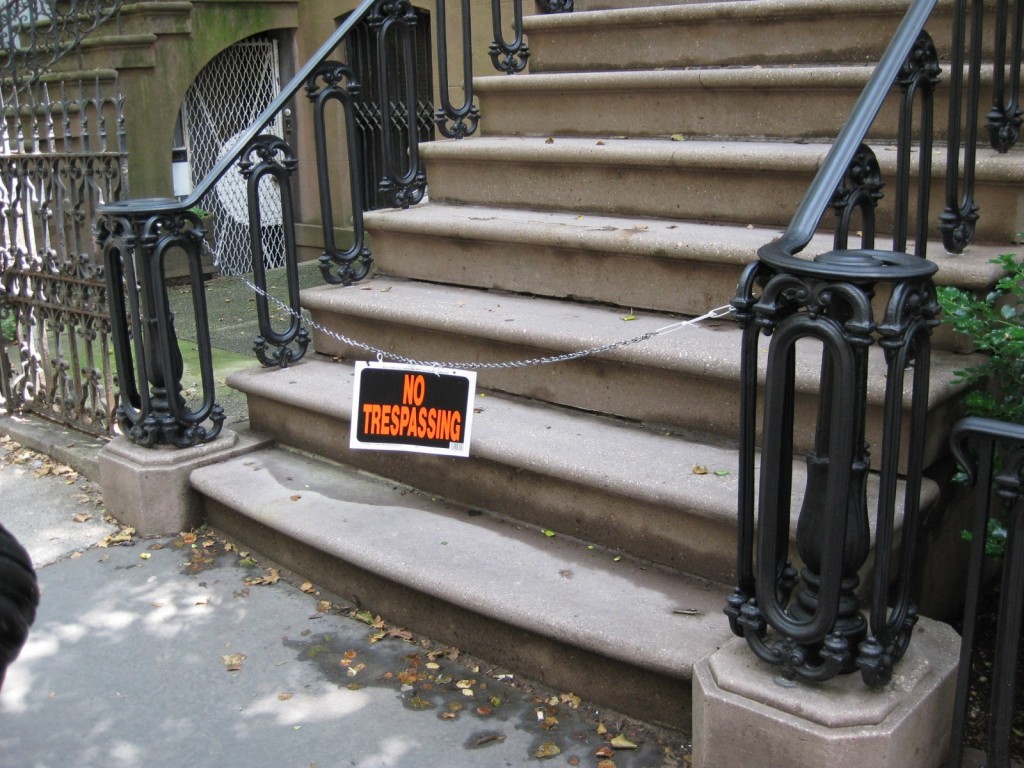
The barriers to home ownership in NYC may not be as high as you think. (Source: Katie Budris via Flickr Creative Commons)
Manhattan Homes Under $1M Article continues below
Cost of Buying in New York City
Much of what has been said about renting in New York City can also be said of buying. In 2017, the median asking price for homes in Manhattan easily surpassed seven figures, hitting $1,567,000. Asking prices in Brooklyn and Queens were more manageable, at $920,000 and $629,000, respectively. These markets continued to see price growth, but in coming months it is predicted to slow slightly. With that in mind, it is worth considering the advantages of renting versus buying.
New York City is typically considered a renter’s town, where the cost of buying is so exorbitant that only a small percentage of residents can achieve homeownership. But a recent StreetEasy study revealed that the tipping point — the length of time in a home after which it’s financially better to own, rather than rent — is lower than you might think. The median number of years required to break even on a home in New York City is 5.6, based on data from the first quarter of 2017.
If you are moving here for a long-term job, think hard about your five-year plan. Will you want to be in the same neighborhood? Will you need more space? Weigh these options and decide if buying might be a better investment.
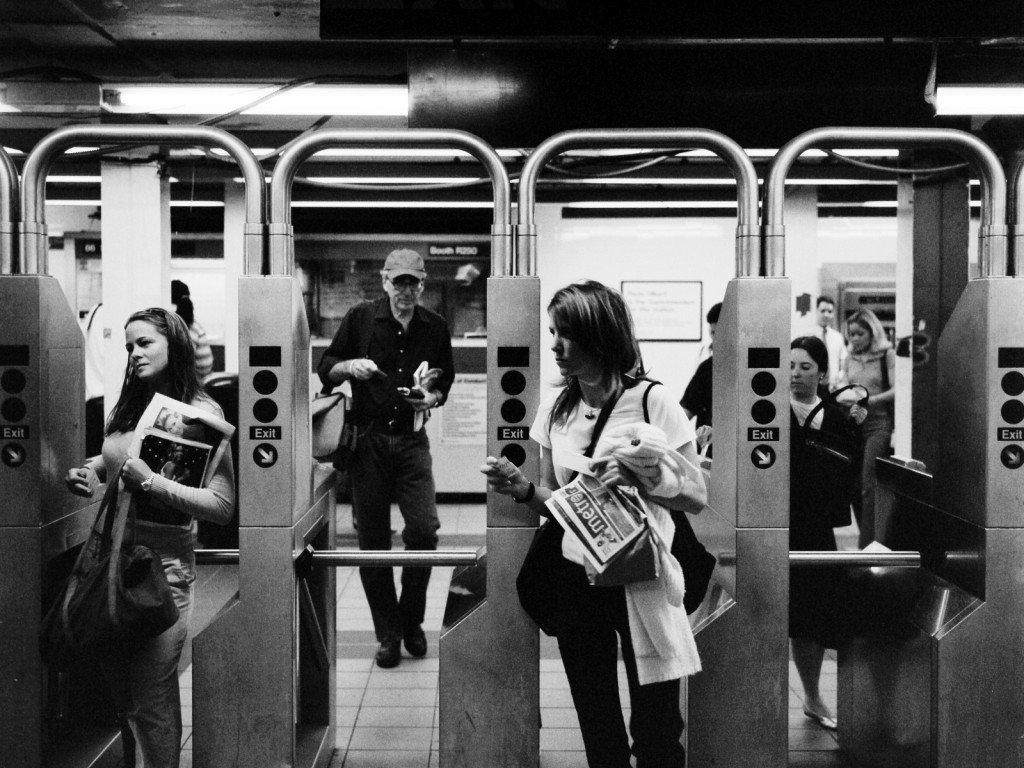
86th Street subway station. Source: Jeff Berman via Flickr Creative Commons
Cost of Transportation in New York City
Most us don’t have cars. That alone is a big cost-saver. It means we don’t have to worry about parking, gas prices, car insurance, repairs and all those other cost-sucking items.
If you do own a car in New York City, be aware that you will face higher insurance rates than in other cities, as well the high cost of parking. In New York City, annual auto insurance rates often exceed $4,000, far above than the national average and even that of the state, which was recorded at $1,173 last year. Moreover still, a parking spot is quite literally another form of real estate in New York City, and is just as expensive. If you want to park your car in a lot, the rate in New York City averages about $400 per month, but can be as high as $500 or $600 in central Manhattan. Think of it as basically renting your car its own bedroom. These costs are about twice as high as they are in L.A., which is by no means a cheap town.
>> Read this guide for advice on owning a car in New York City
Even if you do forego a car, getting around town can be expensive. Most New Yorkers commute by subway, and compared to other modes of transportation, like driving or taking a cab, it’s certainly cheaper. That said, at $2.75 per ride and $121 for an unlimited monthly pass, the cost of public transportation in New York City is almost double the national average of $67 and significantly higher than other major metros like Chicago or San Francisco, where the cost of a monthly transit pass is $105 and $94, respectively. The cost of transportation is also high when it comes to using Uber or hailing a cab in New York City. Focusing on Uber alone, New York City has the highest rates for rides in the country and is the seventh-most expensive city worldwide. The minimum fare in New York City for an UberX ride is $8, compared to $4.60 in Chicago, $5.60 in L.A., and $7 in San Francisco.
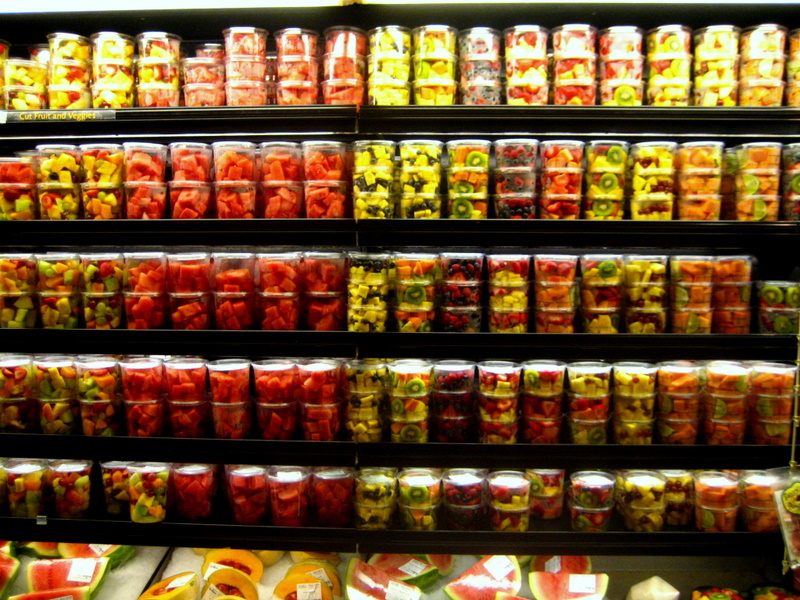
Source: aplusnyc via Flickr Creative Commons
Cost of Food in New York City
There’s good news and bad news when it comes to the cost of food in New York City. Let’s start with the bad news. According to the CNBC, a trip to the grocery store for the essentials like bread, milk and eggs will cost you double the national average. Going out to eat — no surprise — is equally expensive. According to Zagat, the average cost of a meal out in New York City is $48, which makes it the most expensive city for dining out in the country. The national average is $36 per meal. Boston and San Francisco are ranked second and third, with meals averaging $43 and $41, respectively.
The good news? In New York City, some food items may actually be less expensive. Offering a counterpoint to the classic high-cost-of-living argument, Catherine Rampell of The New York Times Magazine hypothesizes that well-educated and well-paid New Yorkers are surrounded by equally well-educated and well-paid people with similar tastes. As a result, “More vendors compete for their business, which effectively lowers prices and provides variety,” she writes. “If there’s more demand for a niche product, then the fixed cost can be spread across more customers.”
Research has shown that some higher-end staples preferred by professional New Yorkers — think organic almond milk, quinoa and manchego cheese — can often be found at the city markets for decent prices, since such products are common here. Try tracking down some fat-free Icelandic yogurt in Dubuque, IA, and you’ll likely end up at one of the city’s few health food stores, where price-gouging is typical.
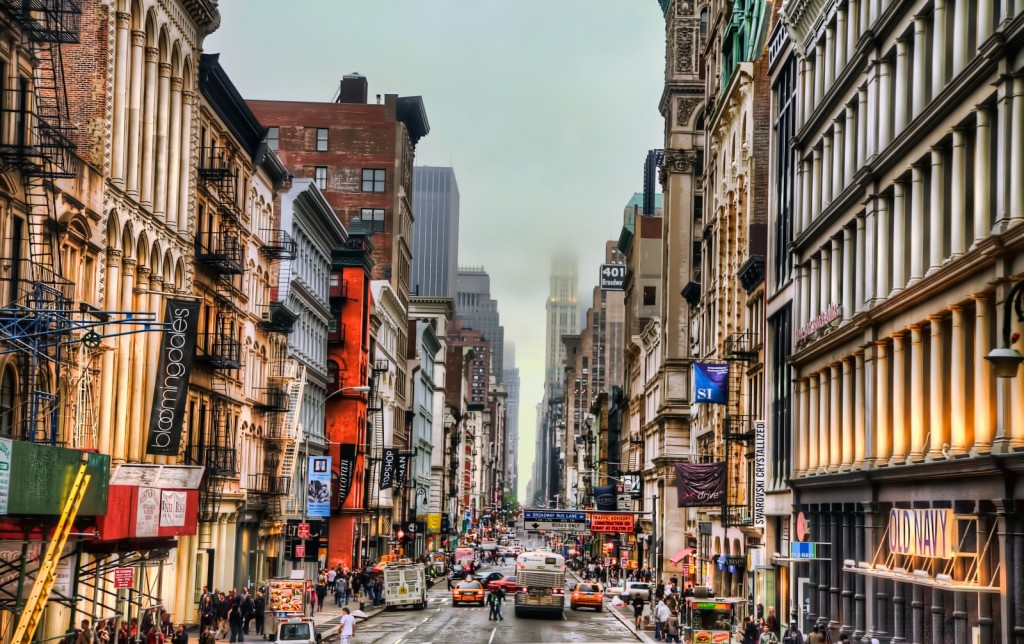
Source: Joey Lax-Salinas via Flickr Creative Commons
Cost of Clothing in New York City
New York City is known for having some of the most expensive shops and department stores in the world. Bergdorf’s, Barneys, Bendel — just to get the B’s out of the way — are all insanely expensive. Snag a pair of shoes for under $500, and you’ll be walking out with a steal. Smaller boutiques and local shops can be just as expensive. The plethora of high-end options tends to skew our perception, making the cost of shopping for clothes in New York City seem exorbitantly high. But there are also plenty of discount shops, budget-friendly national chains, and incredible sales. And with the boom in online shopping, there is no reason why your location should determine how much you spend on clothing.
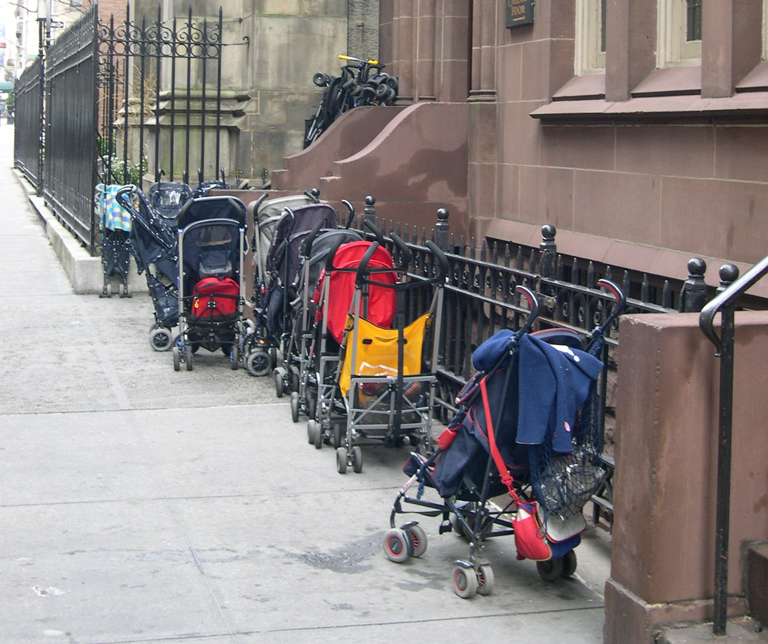
Stroller parking only. (Source: Michael Sciascia via Flickr Creative Common)
Brooklyn Homes Under $900,000 Article continues below
Cost of Childcare in New York City
Raising a kid anywhere is expensive, and raising one in New York City is only more so. That’s because all the aforementioned costs of living (clothing, food, housing) get doubled or tripled when you’ve got a kid, or two, or three. Unless one parent opts not to work, the cost of childcare is also a major expense. In kid-dense neighborhoods like Park Slope, the hourly rate for a nanny is between $13 and $20, but many parents shell out far more than $20 per hour. The national average in 2014 was $13.44, according to Care.com. If you decide to put your child in daycare while you work, your annual costs for childcare are likely to go down, but daycare is still extraordinarily expensive. According to a study produced by New York State Senator Kirsten Gillibrand, the average New York City family spends $16,250 per year on infant childcare.
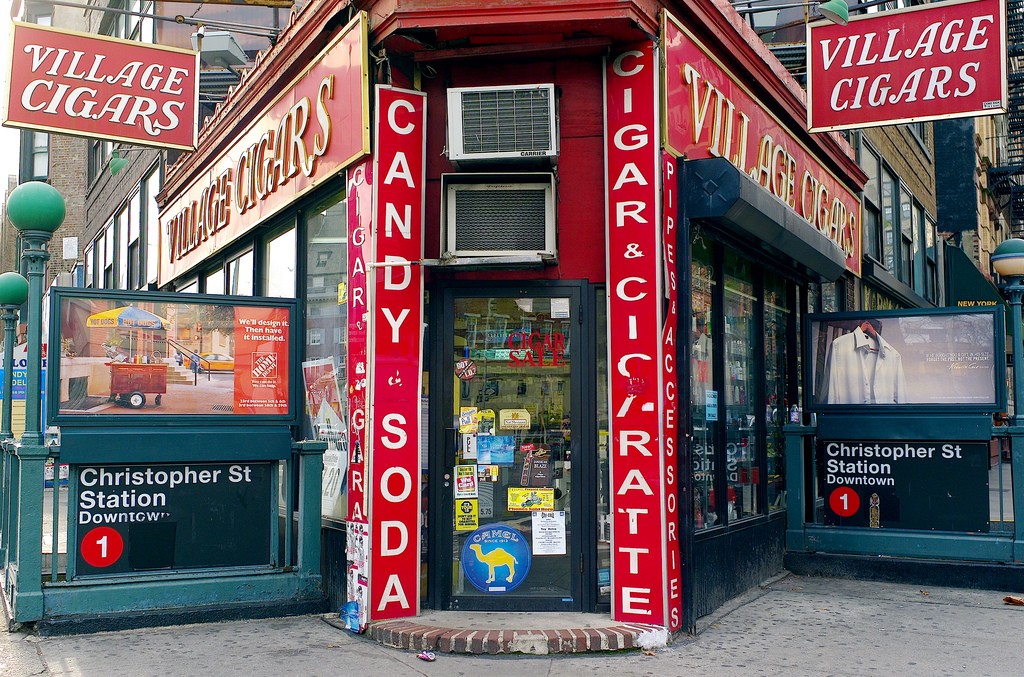
New York City has one of the highest cigarette taxes in the nation. (Source: Susan Sermoneta via Flickr Creative Commons)
Cost of Taxes in New York City
There is nothing as universally groan-inducing as taxes. You can’t live with them and you can’t get by without them. For anyone new to New York, it’s important to know that the city has higher tax rates and additional taxes when compared to other cities and counties across the country.
Property Taxes in New York City
New York state is known for having high property taxes, but New York City property tax rates tend to be higher than the state average. One recent report produced by the New York Post finds that New Yorkers bear the highest tax burden in the nation, paying an average of 13 percent of their income to state and local taxes. On top of that, since New York City’s property values also tend to be very high, the amount NYC homeowners end up paying each year in property taxes is usually quite substantial, and higher than elsewhere in the country.
Income Taxes in New York City
In New York City, we have two income taxes. Lucky us! In addition to the New York state income tax, New Yorkers pay anywhere between 3.078 and 3.876 percent in city income taxes. The actual rate will vary depending on your income level and filing status. New York City is one of the few cities in the country with a personal income tax in addition to the state income tax, so newcomers, be forewarned.
Sales Tax in New York City
The combined state and local sales tax in New York City is 8.875 percent. Nationwide, the average sales tax is 8.45 percent, so the burden in New York City isn’t too egregious. That said, it is slightly higher than the average sales tax in New York state, which is 8.47 percent. Some items in New York City are taxed at much higher rates, such as cigarettes. In addition to the $4.35 tax on cigarettes that New York imposes statewide, the city imposes a supplemental tax of $1.50 per pack, bringing the combined tax rate for NYC smokes to $5.85. New York City’s cigarette tax is among the highest in the nation, second only to Chicago’s $6.16 cigarette tax. The nationwide average cigarette tax is $1.61.
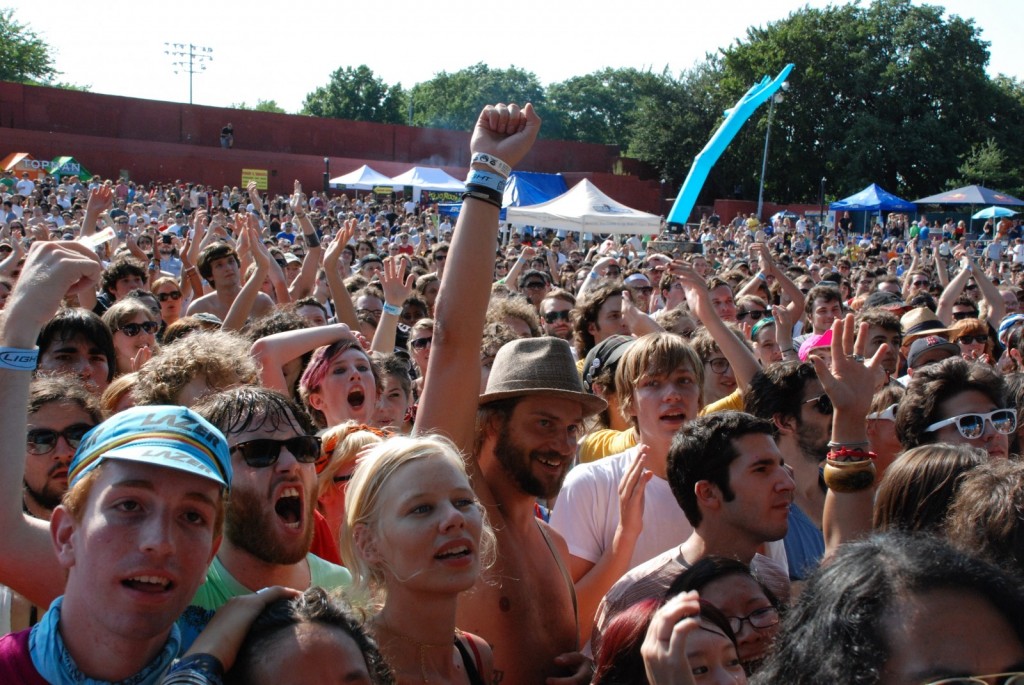
Come summer, there are tons of free concerts in the city. (Source: Kurt Christensen via Flickr Creative Commons)
Cost of Entertainment in New York City
The cost of movie tickets in New York City averages somewhere above a ridiculous $15 a pop. To add insult to injury, our movie theaters are often filthy and can be riddled with bed bugs. These prices are certainly than in other cities. But as is true of the cost of clothing in New York City, the cost of entertainment here runs the gamut.
Do tickets to Hamilton cost $400? You bet! Can you watch live jazz for free at Fat Cat? For sure! Come summer, you have access to world-class theatrical and musical performances in Central Park — all free. Many museums offer special free events, and many have “suggested donations,” which means you can donate however much you want, including nothing at all.
Just keep in mind that for as much as you can spend on entertainment in New York, you can also save. It just takes researching free events and setting priorities. If live music is your jam, a concert every now and then won’t kill your budget. Culture and entertainment are a major reason why people choose to live in New Yrk City, and you’d be losing out if you didn’t go enjoy life in the greatest city in the world.
—
Hey, why not like StreetEasy on Facebook and follow @streeteasy on Instagram?

